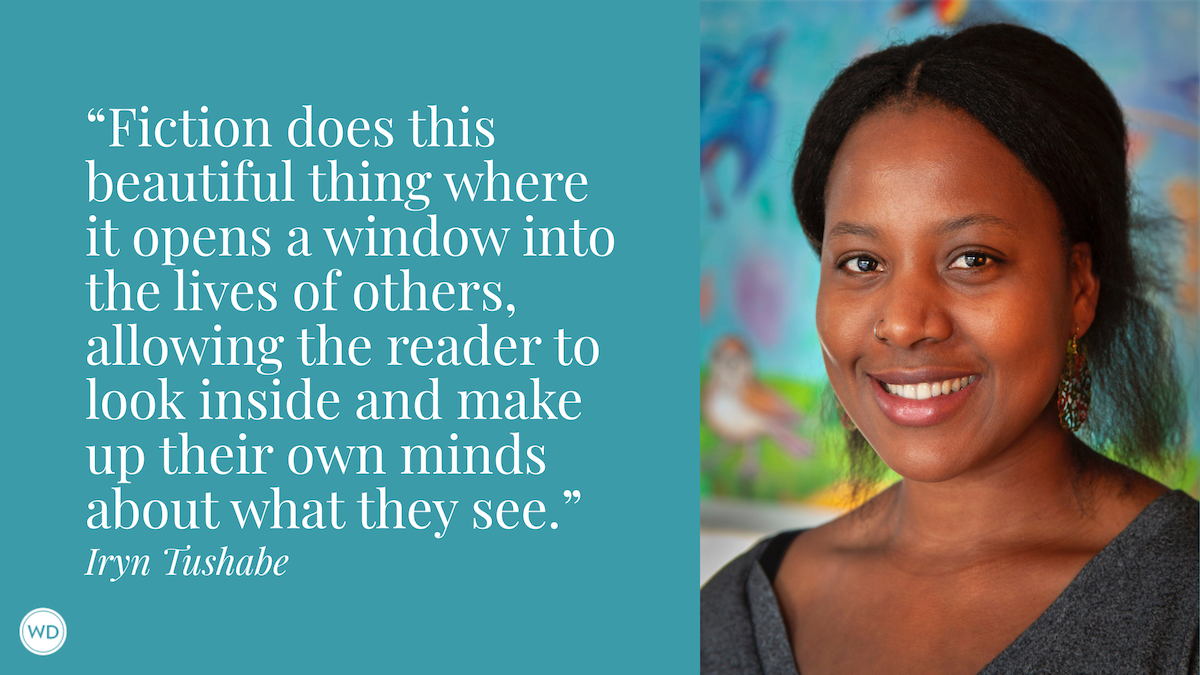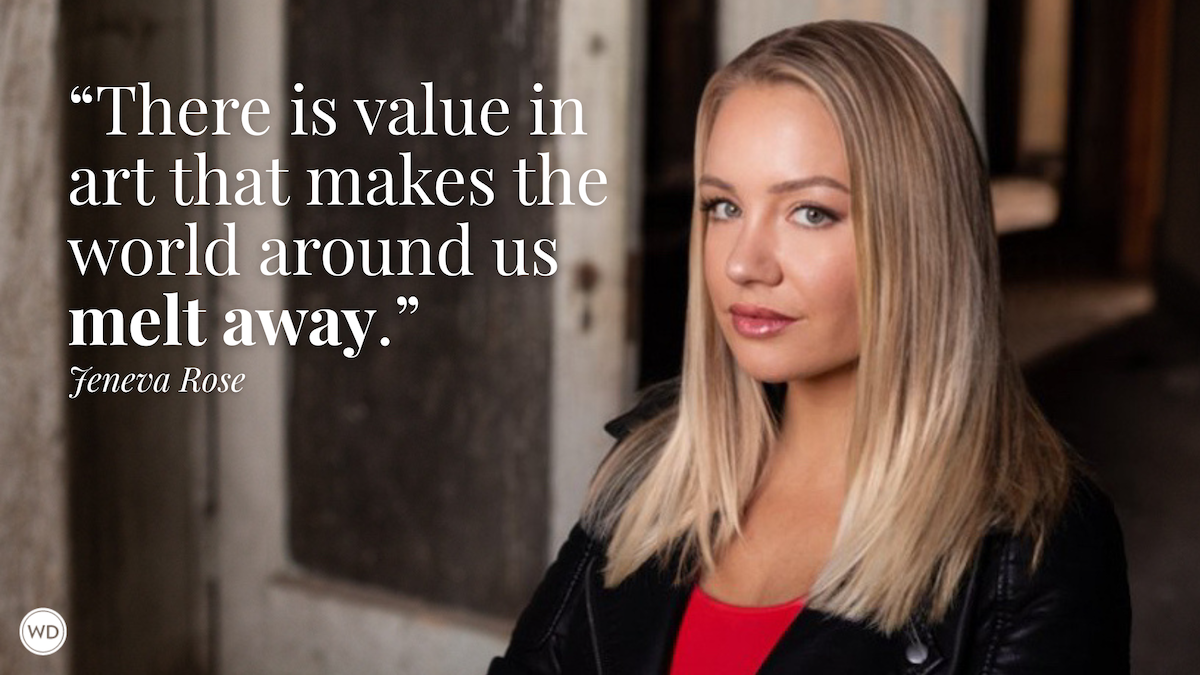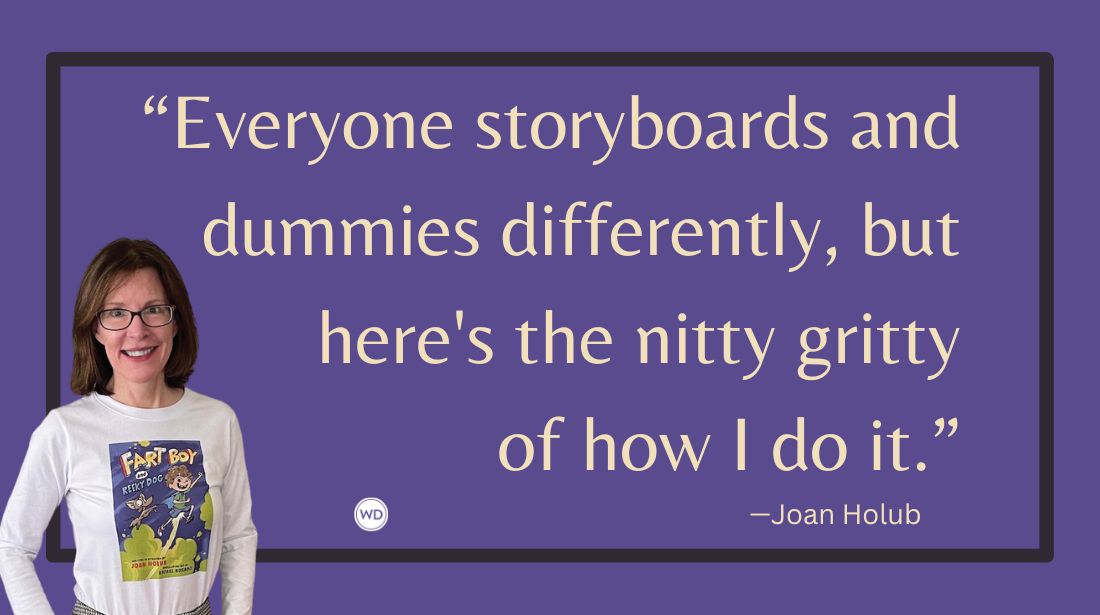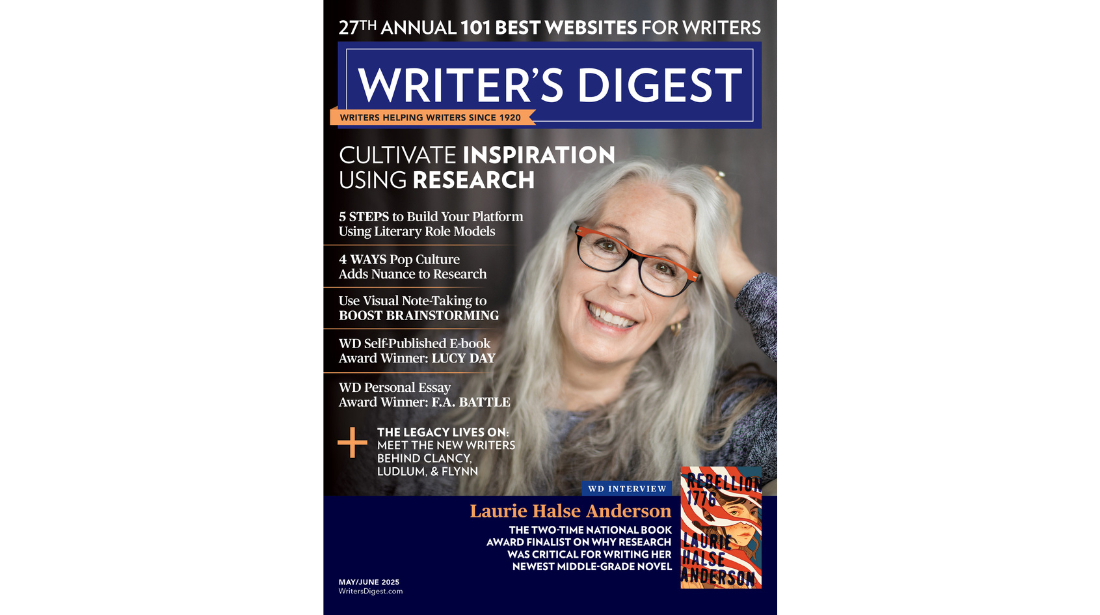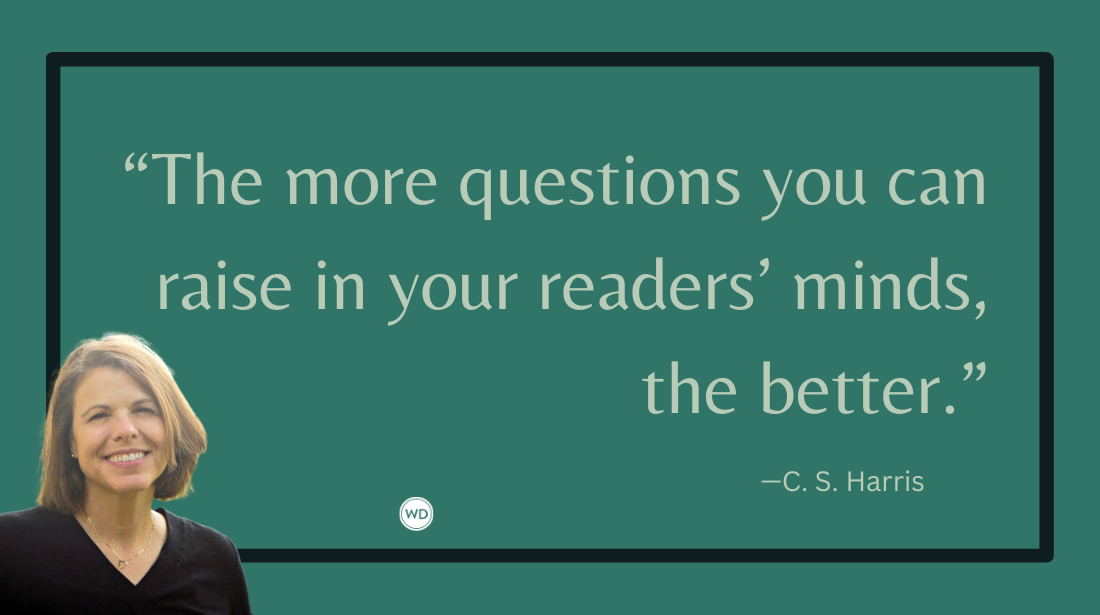4 Tips for Writing Historical Fantasy Fiction
The photograph that inspired author Amanda Glaze to write her novel was only the beginning. Here, she shares four tips for writing a historical fantasy fiction.
The inspiration for my debut historical fantasy novel came from a photograph of my ancestors Edith and Violet Bond as teenagers. It lived on a bookshelf in my childhood home, and I always found it strangely haunting. Perhaps because Edie and Violet, twins, were dressed in identical, ethereal, ghost-like outfits. Or perhaps I found it haunting because one of the few things I knew about Edie and Violet at the time was that they were practicing spirit mediums in the 19th century.
My fascination with these spirit medium twins stayed with me for many years, but it wasn’t until I stumbled across the intriguing intersection between the 19th-century Spiritualist movement and the burgeoning women’s rights movement of the same era that the idea for what would become a novel about Edie and Violet sprang into being.
During the first Spiritualist boom of the mid-to-late 1800s, young women were often considered to be the best spirit mediums, since they were believed to be more “passive” by nature (more room for spirits to move around in those empty, female heads!). So, during a time when women were rarely encouraged to speak publicly, the popularity of Spiritualism created a kind of a loophole that allowed 15-year-old farm girls to travel the country giving trance lectures and conducting séances, seemingly unconscious on stage as spirits spoke through them.
Interestingly enough, these spirits sometimes had rather … radical views about everything from women’s suffrage and child labor laws to marriage and labor reform. And when it’s the spirit of Benjamin Franklin telling you that maybe children shouldn’t work in factories for 12 hours a day, people tended to listen in a way they might not if it was a 16-year-old girl making the same point.
Today’s young women are facing their own fight when it comes to autonomy and a right to speak for themselves, and so I found myself drawn to these real stories of female defiance and set out to write a story about a group of young women with power the world doesn’t want them to have, who fight to make their voices heard.
Here are some things I learned along what way when it comes to creating a historical world with a twist of magic.
1. Let the Story Guide Your Research
There are as many ways to research a novel as there are ways to write one, so while ultimately you’ll have to discover what works for you, my personal approach to writing a historical setting is to start with a general overview of the time-period and then let the story and characters guide the deeper research from there.
Prior to writing the first draft, it’s helpful to be familiar with the major events of the time-period in which your novel is set. What wars, widespread political movements, major cultural events, etc. were happening at the time? Who was president or otherwise in power? What was the overall distribution of wealth? If you come across something intriguing at this stage, go ahead and fall down that research rabbit hole.
For example, before embarking on my first draft of my story about a pair of runaway spirit medium twins, I did a deeper dive into the Spiritualist movement of the 19th century. But you don’t need to be an expert on the time-period before embarking on your first draft or outline. It’s OK if your character is wearing a hat that you later realize wasn’t invented until 50 years later. You’ll have plenty of time to dig into the historical details in subsequent drafts. The key in the beginning is to give yourself enough of a sense of the era so that you can start brainstorming the characters that might live in this world, as well as some of the obstacles they might face.
Once I have a sense of my characters and my story, my drafting and my research tend to go hand in hand. If I discover that one of my characters has a particular profession, I might stop down to research that before I continue with the draft. Or there might be a certain setting or real-life historical event that requires a deeper dive.
For example, in my spirit medium novel, I realized early on that a creepy asylum would play a significant role, and so I took the time to read real accounts from women who were unfairly committed to similar places before drafting the first version of those scenes. But even in that case, since momentum is important to me when drafting, I gave myself permission to leave several placeholders in the first version of that scene, knowing I would have time to go back and add more historical detail in subsequent drafts.
2. Vary Your Research Sources
As you draft and brainstorm, you will naturally end up with some kind of list (it doesn’t have to be pretty) of targeted research questions and research areas. There will be a lot of things you need to know, and the good news is, the answers are out there.
Books, articles, and biographies written about the time-period, place, and people who lived in the era where your story is set are always good places to start. In addition to historical facts and interesting anecdotes, these accounts usually provide a historical context from a more contemporary perspective, which can be very helpful when thinking about the thematic elements of your story.
In addition to accounts written by historians, I like to immerse myself in the time-period by reading books and consuming other media that people were reading or watching at that time. This can include novels written and published within a decade or so of your time-period, movies filmed and released during that time (if your setting is more modern), music recordings, newspaper articles, and (my personal favorite) advertisements from newspapers and magazines (just to name a few).
First-hand accounts are also invaluable when it comes to everything from character and tone to dialogue and setting. This is where your local research librarian will become your best friend. They can help you find the text of speeches made by politicians and activists, transcripts of interviews with mill workers, travel diaries that describe a certain city during that time, pamphlets, memoirs, journals, and so much more. For my spirit medium novel, a wonderful librarian pointed me in the direction of a pamphlet written by a former mesmerist who revealed every trick he used on stage to fake his spirit visitations, which was enormously helpful when it came to coming up with the tricks my own clever young mediums used.
Don’t be afraid to reach out to ask for interviews as well. You might be surprised at how willing people are to talk to you and share their stories. This includes anyone who might have been alive (or had family members who were alive) during a real historical event that takes place during your novel, but it also includes local historians, historical societies, and history museums.
IndieBound | Bookshop | Amazon
[WD uses affiliate links.]
3. Weave in Magic or Fantasy Elements
While you are researching the time-period, start thinking about ways you might want to integrate touches of magic or fantasy elements into your historical world. Were there any beliefs—supernatural or otherwise—during the time-period that might serve as inspiration? Are there any “what ifs” that emerged from your research that intrigue you?
For example, when historians look back on the Spiritualist craze of the 19th century, there’s a general belief that many of the spirit mediums were frauds, which is frankly the most logical conclusion to draw since so many of the popular mediums later publicly admitted to faking their spirit visitations. But I kept thinking about how many of these mediums had been young women.
And I kept thinking, too, about the many ways our society—both 150 years ago and today—punishes and demeans women who publicly harness their own power. That made me wonder what these women’s lives might have been like if their abilities had been real. What if publicly admitting to being frauds was the only way they could keep themselves safe? What if, all this time, their true powers had been hidden in plain sight? Once I had that “what if” in mind, I read as much as I could about what real Spiritualists believed during the 19th century, and from there I created a magic system that was a mix of those real beliefs, along with some supernatural touches of my own.
Another question you may ask yourself is if you want to weave magic into the history of the world as we understand it today, or if you want to create an alternate history. For my spirit medium book, I liked the idea that the events of my story could theoretically fit into our real world, the truth hidden in the pages of our own history books. But you can also create an alternate version of history, such as Justina Ireland does in her excellent Civil War with zombies duology, Dread Nation.
4. When You Get Stuck, Go Back to the Research
This is advice that was gifted to me by the brilliant, award-winning novelist Elana K. Arnold, and I like to in turn give it to everyone I know because it has pulled me out of more plot holes and writer's block spirals than I can possibly count.
This advice works no matter the genre you are writing in, but I think it’s particularly fruitful if you have the great fortune of working with a historical setting. The thing about history is that it is absolutely wild. So many weird, strange, bizarre things have happened in this world. It is matched only by the many weird, strange, bizarre people who have inhabited it.
So, when you are stuck on a plot point or unsure of a character's turn or motivation, go back to the research. Read a memoir. Scan a Wikipedia entry. Scroll through an Instagram account that gathers strange moments in history. Pick a day within your time-period and read that day's newspaper (many of these exist for free online). Go on a walk and listen to a history podcast (if you haven’t listened to Dana Schwartz’s amazing podcast Noble Blood, what are you waiting for?). Chances are inspiration will strike you sooner than you think.
Amanda Glaze is the bestselling author of The Second Death of Edie and Violet Bond, a Barnes & Noble YA Book Club Pick. She grew up in Northern California where she spent most of her time with her nose in a book or putting on plays with friends. Since then, she’s lived many lives: as a bookseller, a theater director, and an Emmy award-winning film and television producer. When she’s not running off to the mountains, she lives in Los Angeles with her partner and their two writing-familiar cats. You can find her online at amandaglaze.com




